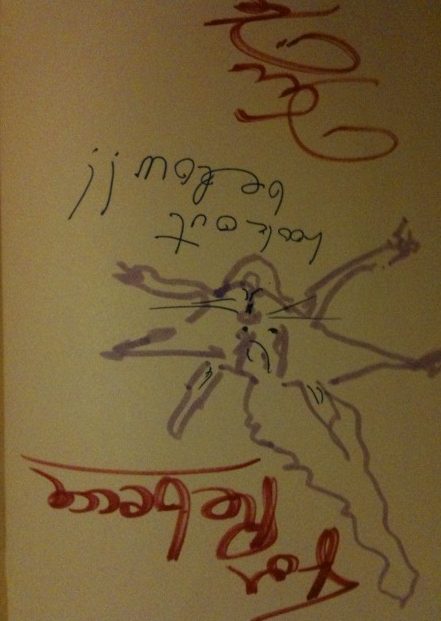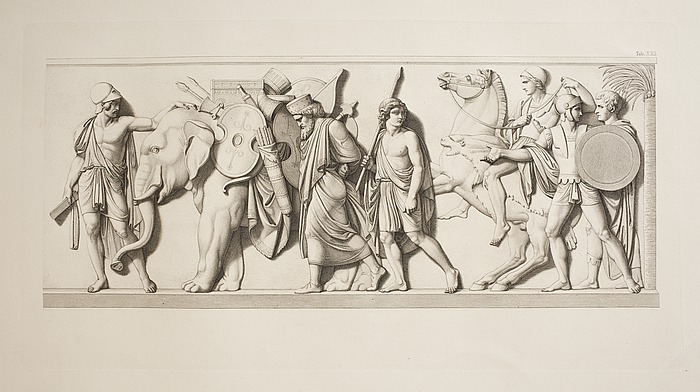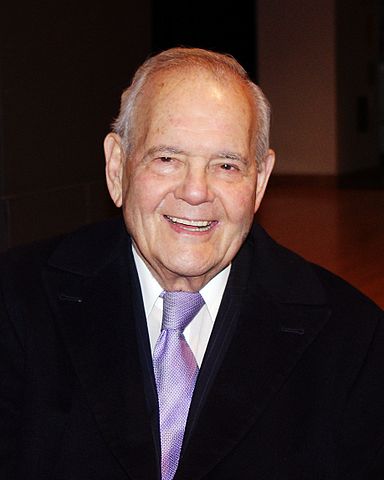The Center for Fiction: “Away from the Rum Shop and Billiard Room”
June 21, 2012, New York City. I’ve just spent the afternoon in meetings at the Grove/Atlantic offices near Union Square. Now I’m trying to hail a cab—no way am I riding the subway in this heat—to take me to The Center for Fiction, where Harper Perennial’s Cal Morgan and his wife Cassie are going to introduce me to Noreen Tomassi, the Center’s director. I’ve heard the Center has a writers’ studio with workspace available 24/7. I want to check it out, see if it’s something I might like to take advantage of on my increasingly frequent trips up to the city. I’m also curious about the Center’s history, which dates back to the early 1800s and includes names like Edgar Allan Poe, Mark Twain, Ralph Waldo Emerson, and Oliver Wendell Holmes.
I give the cab driver the address, 17 East 47th Street. Only then do I realize: the Center for Fiction—arguably one of New York City’s most important literary hubs, with a robust program of readings, lectures, and classes (one of them taught by legendary editor Gordon Lish)—is in midtown.
Twenty-five minutes later I step out of the cab and get my bearings. I’m standing on 47th between Madison and Fifth Avenues. The Diamond district is a block west, L’Oreal headquarters across the street, Morgan Stanley a few doors down. And here, between an Irish pub and the unoccupied Algerian Mission to the UN, is a bay window filled with books.
Inside it’s hushed and cool. The Center’s entry level is, in fact, a bookshop. Dark wood floors, oriental rugs, and, along the tops of the wall-to-wall bookshelves, marble busts. Cal and Cassie arrive, a cluster of doorbells jingling gently behind them. (Did I imagine the bells?) We page Noreen, who tells us to come on up. Cal leads the way to the elevator, which has one of those terrifying swinging doors you have to open and close yourself. The elevator’s interior walls are papered with literary quotes.
Noreen takes us to the second floor, where public lectures and readings are held. It’s a gorgeous venue—crown moldings and polished parquet floors and leather chairs and red velvet drapes. More books and literary journals (including the current issue of Ploughshares); more marble busts. And a Steinway baby grand, which Noreen lets me play. I manage to trip through a few measures of Chopin’s Fantasie Impromptu.
You can come play anytime, Noreen says.
Bless her.
There are eight floors total, though the seventh floor is rental space. The third and fourth floors are library stacks (oh, that book smell, we’ll never digitize it), with 85,000 circulating titles and the largest collection of crime fiction in the country. The fifth and sixth floors have meeting rooms and offices. And on the eighth floor is the sky-lit writers’ studio I’ve heard so much about. At the moment, there’s just one writer here, though there are seventeen desks available. Noreen tells me the writers get private lockers and access to a small kitchen kept stocked with coffee, water, and candy. There’s also a first-come, first-serve private writing room at the back.
Calling Brooklyn: do you guys know about this place?
*
Though an organization focused on the literary arts—the only nonprofit in the United States solely devoted to promoting the reading and writing of fiction—might seem out of place in the heart of midtown’s commercial hubbub, its history is actually rooted in business. In the early 19th century, the mercantile and shipping trades in New York City were booming. Merchants began to hire clerks, who functioned as both apprentices and accountants—something akin to today’s administrative assistant.
The clerks turned out to be a rowdy bunch. They liked to drink and play pool in the off hours. The merchants decided these boys needed an education, and fast. Led by William Wood, a successful businessman in the British-American trade industry, the merchants got together “to consider the propriety of establishing a Library and Reading Room,” a place “where enterprising young men could educate themselves.” (Also a place to keep them “away from the rum shop and the billiard room.”)
Thus, in 1820, the Mercantile Library of New York was established. The library’s first holdings were donations; members went door to door pushing wheelbarrows, literally begging for books. In February of 1821—James Monroe had just begun his second term as president—the library opened its doors at 49 Fulton Street in lower Manhattan, occupying a single floor at the top of the building.
But the Board of Directors faced a problem. Fiction—“works of fancy,” or “romance,” as it was then called—was considered unsuitable reading material, a lazy and unhealthy diversion from a “real” education. The merchants, therefore, wanted their clerks to read exclusively nonfiction. From the Board’s second annual report: “A few of the best imaginative works are permitted, and these were at first the oftenest called for by members, but the voice of wisdom has made itself heard, and many who were wont to devour pages of romance alone have become readers of history and lovers of science; and many we hope have there received the first impulse to faculties which would otherwise have laid dormant and neglected.”
But—as one might expect from a group of rum-drinking pool players—the clerks wanted fiction. Five years after the Library’s founding, they actually rioted for it. The Board surrendered. The annual report from 1836 reads: “The addition of works of fiction offers an inducement to seek for the acquirement of knowledge in the alluring fields of romance and the imagination.”
Note the spin: in ten years, fiction had gone from being a distraction from an education to a pathway toward knowledge.
*
In 1830 the Mercantile Library Association joined up with the Clinton Hall Association and purchased land at Beekman and Nassau Streets. Together, they built Clinton Hall, a larger building with a reading room, offices, stacks, and studio space for writers to work. Edgar Allan Poe was one of the first to use the space, working on the manuscript that would become Tales of the Grotesque and Arabesque (1839). The Library began to offer classes in foreign language and drawing. A series of literary lectures was launched in the 1850s, with Mark Twain, Ralph Waldo Emerson, William Makepeace Thackeray, and Oliver Wendell Holmes bringing in standing-room-only crowds.
The population of New York grew and moved uptown; the Library followed. In 1854, The Mercantile Library at Clinton Hall moved to the Opera House at Astor Place and Lafayette Street. (A bit of trivia: if you get off the subway at Astor Place, you’ll see an arched bricked-over doorway that says “Clinton Hall”—once a direct passageway from the subway platform into the library.)
The Board of Directors also made a historic decision to open up membership to “all people of good character”—including women.
By the early 1870s the Mercantile Library was bustling, with 120,000 volumes, 13,000 members, and 1,000 books per day circulating throughout the City. It was the fourth largest library in the country and the largest lending library in the United States, and was operating from three locations: the Clinton Hall building at Astor Place (which housed the New York Philharmonic until Carnegie Hall opened in 1891), 149 Broadway, and 598 Madison. The demand for books was so high that the Library initiated an order-on-demand system. Drop boxes were attached to lampposts throughout the city. Members could fill out request cards and leave them in the nearest box. The Library owned teams of horses and wagons, which circulated the city daily, picking up the cards and bringing them back to the various locations. A runner would quickly find the requested books and re-load the wagons.
Often the turnaround time from order to delivery was just a few hours—a revolutionary system unmatched for ease and speed until the advent of the digital book.
*
In 1902, when the cornerstone of the New York Public Library was laid, the Board knew it was time for a change in the Merc’s focus.
There were other issues besides competition from the public library. In the early 20th century, there were 500,000 people per square mile living without indoor plumbing on the lower east side. It wasn’t the best place to hang out and read anymore. The Board sold the Astor Place building and, in 1932, bought the home of novelist F. Hopkinson Smith at 17 East 47th Street—the Center’s current location. The home was razed and an “attractive, white marble, up-to-the-minute” facility was built by the architectural firm of Henry Otis Chapman (who’d designed the Troy Public Library and the Church of the Holy Trinity on 88th Street).
The new building would house 230,000 volumes. And its focus would shift away from being a lending library exclusively—though that would continue—to becoming a center for the literary arts.
The rest, as they say, is history.
*
We’ve finished our tour, and now Cal, Cassie, Noreen and I are standing outside Noreen’s office door. Cal and Noreen are telling me about the Emerging Writers’ Fellowship offered through the Center, which is funded by a grant from the Jerome Foundation and provides writers who live in one of the five boroughs with a $3,000 grant, access to the writers’ studio, a mentorship option with a freelance editor, and meetings with agents. Fellows also give two public readings. Applicants can’t be students, and they can’t have a book published or under contract; otherwise, the application process is wide open.
On the wall behind Cal is a giant poster of the jacket for Brad Gooch’s Flannery: A Life. Peacock feathers along the edge, Flannery herself staring out from the top corner—an ironic reminder of my own writing space back home in Georgia, a chicken coop tucked into the trees at the edge of our backyard.
We typically get about 300 applications for the Fellowship, Noreen is saying, from which we select nine Fellows.
It’s ridiculous, but I feel momentarily envious of the borough-dwellers who get to apply.
Before I leave, Noreen gives me the Center’s brochure with a calendar of events. I glance through the pages—it reads like a who’s who of the literary world. Readings by Roxana Robinson, Kelly Link, Ben Fountain, Dawn Raffel, Roxane Gay, Jane Smiley. Classes with Joyce Carol Oates and Gordon Lish. A celebration of Cheever with Rick Moody, Susan Minot, and Elizabeth Strout. An author/editor panel with Alix Ohlin and Gary Fisketjon.
On the way out I meet Mark Daly, a library intern and student in the MLS program at the Pratt Institute. I tell him I might write up a piece on the Center for Ploughshares, and he lets me take a candid shot of him working behind the bookstore counter.
This is an amazing place, he says. I hope you’ll be back.
I tell him to count on it.
For more on the Center for Fiction, including information on the Emerging Writers’ Fellowship, a current calendar of events, and Noreen Tomassi’s excellent history of the Mercantile Library (which I drew from, extensively, to write this post), visit http://www.centerforfiction.org/
(8th floor writers’ studio image from here. All other photos are by the author.)


